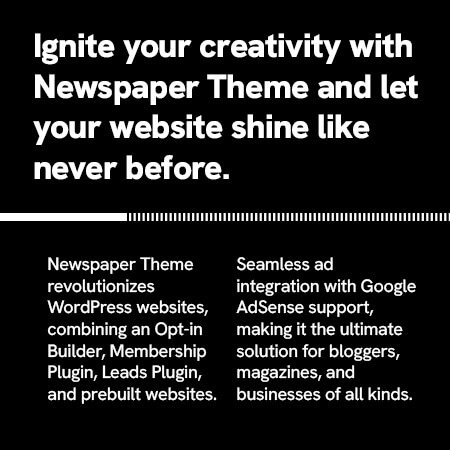
When we set out to achieve something, goals often serve as our guiding light. They give us direction, a clear endpoint to strive toward, and a sense of purpose. But while goals are undeniably useful, they can sometimes limit our vision. If we’re not careful, they can also become the very thing that hampers long-term progress. This is particularly true in areas like accessibility, where a narrow focus on “checking boxes” or meeting compliance standards can fall short of creating meaningful change.
The real question isn’t just about what we want to achieve—it’s about how we approach the journey itself.
The Problem with Goal-Centric Thinking
In many organizations, there’s a tendency to treat accessibility as a one-time goal: a task to check off a to-do list. Once the necessary adjustments are made—whether it’s an audit, a series of fixes, or meeting certain regulatory requirements—there’s a sense of completion. But in reality, accessibility is not a destination; it’s an ongoing process that should be ingrained into every aspect of product development and organizational culture.
I’ve seen this firsthand in my own team, where we would often joke that our ultimate goal was to put ourselves out of a job. On the surface, this sounds like a defeatist attitude, but it actually reflects an essential principle: accessibility is not the responsibility of just one person or a single team. It should be a shared, cross-organizational commitment, woven into every part of the workflow. The idea is that accessibility becomes so ingrained in the process that it no longer feels like an afterthought or an external task, but rather an integral part of how the company operates.
However, focusing too much on compliance—simply ticking boxes to meet a set of standards—misses the broader picture. While it’s important to ensure that your product meets the necessary legal and technical requirements, this should never be the end of the conversation. Compliance doesn’t automatically lead to a culture of inclusivity, and it certainly doesn’t guarantee that the product is truly accessible to all users.
Shifting from Compliance to Culture
So, if compliance isn’t enough, what should our real goal be? It’s about building a culture that prioritizes accessibility in every workflow, every decision, and every aspect of development. This culture isn’t built overnight, nor is it something that can be achieved by simply “checking the box” on accessibility guidelines. It requires a mindset shift at all levels of an organization.
Instead of framing accessibility as a task or a checklist, companies should aim to make it a natural part of their processes. This means integrating accessibility from the very beginning, whether it’s in the initial planning stages of product development or in the ongoing updates and revisions that occur over time. Everyone in the company—from designers and developers to marketing and customer service—should have a shared understanding of the importance of accessibility and be equipped with the tools to contribute.
For instance, accessibility shouldn’t be something that’s only considered when a new feature is introduced or when the product is about to be released. Instead, teams should be thinking about accessibility every step of the way. When designing a new interface, accessibility should be part of the initial design considerations. When writing content, teams should think about how to make it usable for people with various disabilities, whether it’s ensuring that text is readable for people with visual impairments or that videos have appropriate captions for those with hearing loss.
Beyond the Checkbox: The Value of Meaningful Accessibility
The real goal of accessibility is not to meet a set of standards or complete a checklist. The goal is to create products that are truly inclusive, providing meaningful and usable experiences for all users. When accessibility is treated as an ongoing practice rather than a one-time goal, it has a far greater impact.
Think about it: a truly accessible product doesn’t just comply with the bare minimum of legal or technical requirements; it goes above and beyond to ensure that every user, regardless of their abilities, has a seamless experience. This means considering all aspects of the user journey—from design to development to customer support—and ensuring that accessibility is prioritized at every stage.
This broader view of accessibility also allows companies to stay ahead of the curve. As new technologies and user needs evolve, an organization with a culture of accessibility will be better positioned to adapt and innovate. Instead of constantly reacting to new guidelines or lawsuits, companies can take proactive steps to improve the user experience for everyone.
The Long-Term Benefits of a User-Centric Culture
Focusing on accessibility as part of a broader cultural transformation brings long-term benefits to both the company and its users. For one, it leads to products that are genuinely inclusive, improving the experience for people with disabilities and building stronger relationships with this often-overlooked demographic. It also leads to greater brand loyalty, as users are more likely to trust and engage with companies that demonstrate a commitment to inclusivity.
Moreover, an organization that fosters a culture of accessibility is likely to see improvements in team morale and productivity. When everyone feels responsible for creating an accessible product, there’s a sense of shared purpose and accountability. It becomes less about individual tasks and more about collective ownership of the product’s success.
From a practical standpoint, a user-centric culture can also help mitigate the risk of legal issues. While there’s no guarantee that simply focusing on accessibility will prevent lawsuits, companies that embrace accessibility as a core value are better equipped to meet evolving standards and respond to the needs of diverse users.
Conclusion: Setting the Right Goal
Ultimately, the real goal should be much broader than compliance or achieving a single milestone. Accessibility is not a checkbox to mark off but a practice to adopt and sustain. By shifting the focus from short-term goals to long-term systems and cultural change, companies can create products that are not only accessible but genuinely inclusive, delivering value to all users, regardless of their abilities. When accessibility becomes a core part of your company’s DNA, the results speak for themselves—both in terms of user satisfaction and organizational growth.
4o











